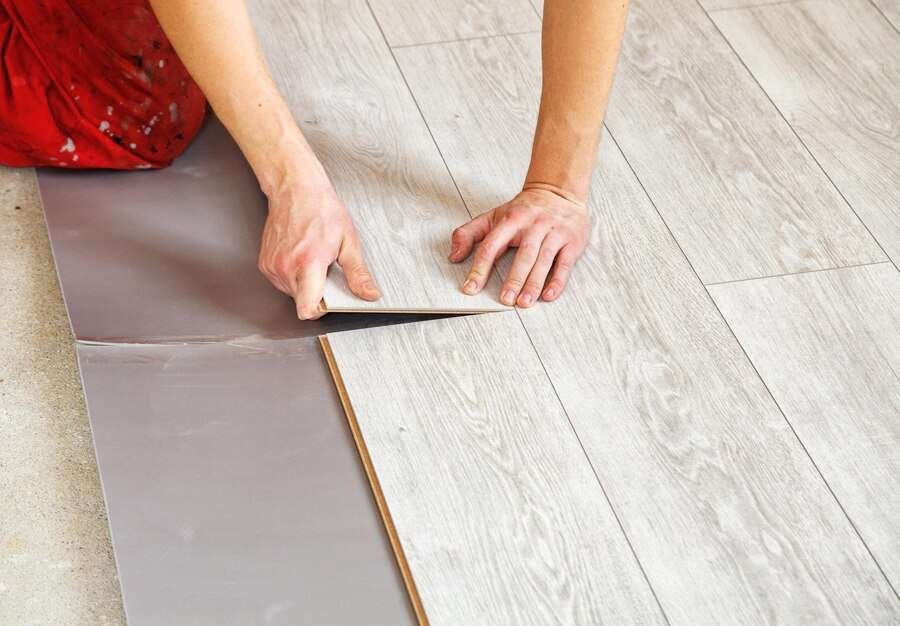Peel and stick floor tiles have emerged as a game-changer in home renovation and interior design. Whether you’re looking to refresh an old room or tackle a DIY project, these innovative tiles offer a hassle-free solution. Below, we answer the most frequently asked questions about peel and stick floor tiles to help you understand their benefits, installation process, and maintenance requirements.
What Are Peel and Stick Floor Tiles?

Peel and stick floor tiles are a type of self-adhesive flooring designed for easy installation. Unlike traditional tiles that require mortar or grout, these tiles come with a sticky backing that allows them to be applied directly to most surfaces. They are typically made from vinyl or other durable materials, offering a range of styles and patterns to match any décor.
Types of Peel and Stick Tiles
There are several types of peel and stick tiles available:
- Vinyl Tiles: These are the most common, offering a variety of designs, including wood, stone, and ceramic looks.
- Laminate Tiles: These tiles replicate the look of natural materials and are known for their durability.
- Cork Tiles: These provide a softer, warmer feel underfoot and are ideal for areas where comfort is a priority.
How Do Peel and Stick Floor Tiles Work?
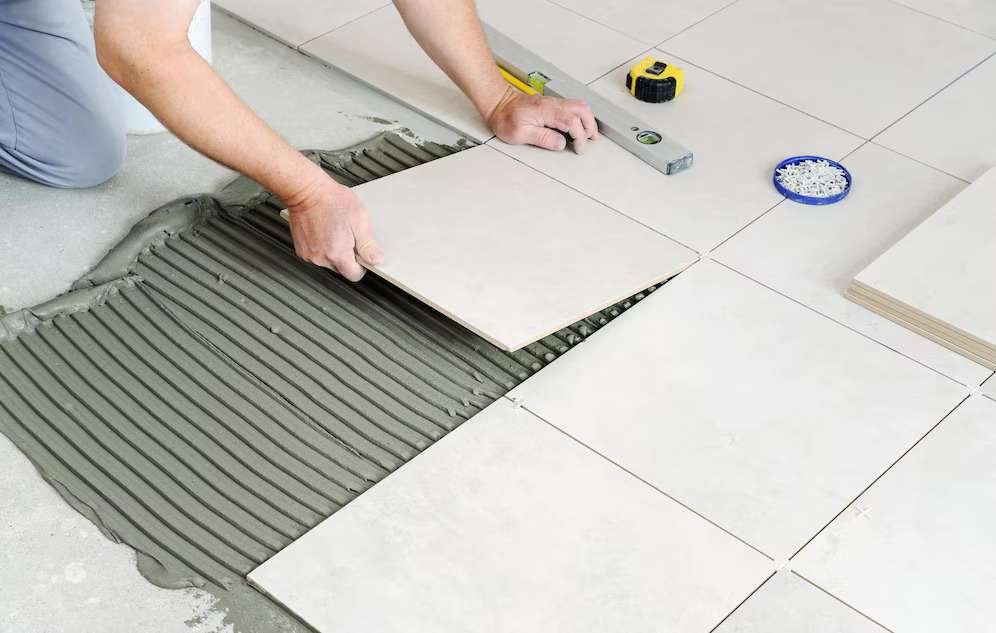
Adhesive Backing
Peel and stick floor tiles have a pressure-sensitive adhesive on their back. Once you peel off the protective backing, you can stick the tile directly to your floor. The adhesive bonds strongly to most clean, smooth surfaces, ensuring a secure fit without the need for additional adhesives or tools.
Installation Process
- Preparation: Clean the floor thoroughly to remove any dust, dirt, or grease. The surface must be smooth and dry for the adhesive to stick properly.
- Measurement and Cutting: Measure the area where you plan to install the tiles. If needed, cut the tiles to fit around edges and obstacles using a utility knife or scissors.
- Application: Peel off the backing and press the tile firmly onto the floor, starting from one corner and working your way out to avoid air bubbles. Use a rolling pin or a flat object to ensure a smooth and secure application.
- Sealing: For added durability, especially in high-traffic areas, you may choose to apply a sealant around the edges of the tiles.
What Are the Benefits of Peel and Stick Floor Tiles?
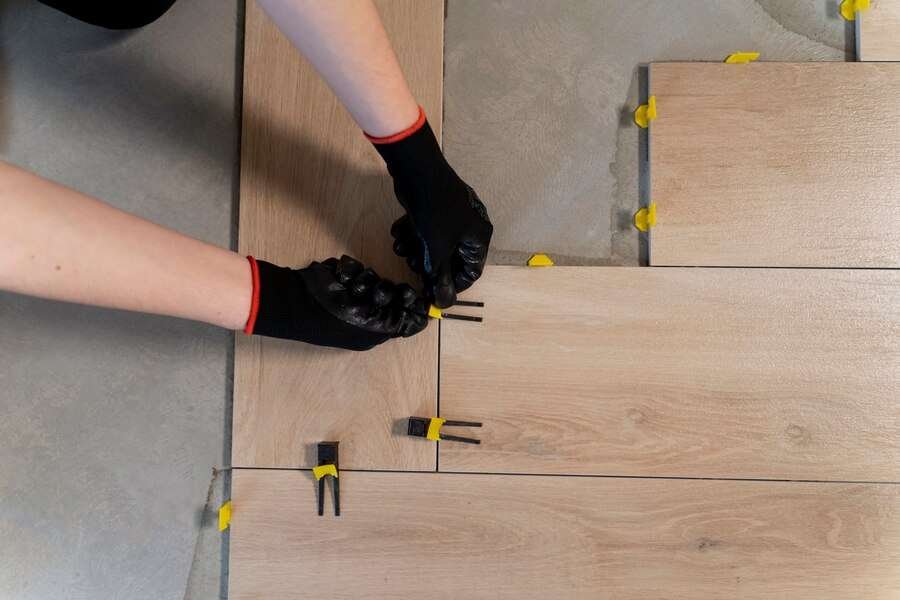
Easy Installation
One of the most significant advantages is the ease of installation. Unlike traditional tiles that require professional help, peel and stick tiles can be installed by anyone with basic DIY skills. No special tools or expertise are needed.
Cost-Effective
Peel and stick tiles are generally more affordable than traditional flooring options. They eliminate the need for expensive adhesives and tools, making them a budget-friendly choice for homeowners.
Versatility
These tiles come in a wide range of designs, colours, and patterns, allowing you to create a customised look for any room. Whether you want a sleek, modern appearance or a classic, traditional style, there’s a peel and stick tile option to match your vision.
Low Maintenance
Peel and stick tiles are easy to clean and maintain. Regular sweeping and occasional mopping are usually sufficient to keep them looking their best. Unlike grout, which can be difficult to clean and maintain, the smooth surface of these tiles makes them less prone to stains and dirt buildup.
Where Can Peel and Stick Floor Tiles Be Used?
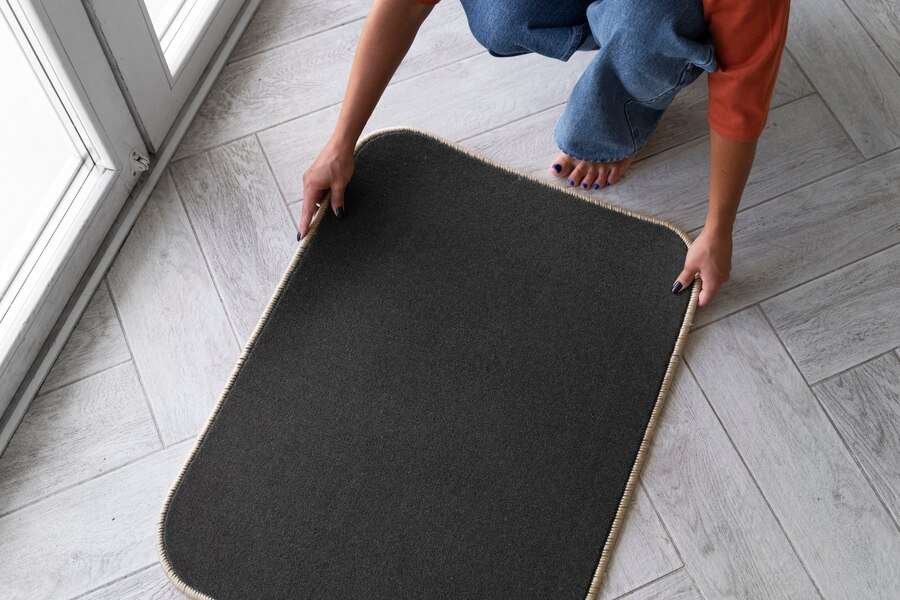
Residential Spaces
Peel and stick tiles are perfect for various residential applications, including:
- Kitchens: They can be installed over existing flooring for a fresh look or used to cover unsightly areas.
- Bathrooms: Water-resistant varieties are ideal for bathroom floors.
- Living Rooms and Bedrooms: Enhance the look of these spaces with stylish and durable tiles.
Commercial Spaces
These tiles are also suitable for commercial settings where a temporary or cost-effective flooring solution is needed. They can be used in:
- Retail Stores: For creating appealing displays or updating flooring.
- Offices: As a quick upgrade to existing floors without disrupting daily operations.
- Showrooms: To provide a clean, professional look.
What Are the Limitations of Peel and Stick Floor Tiles?
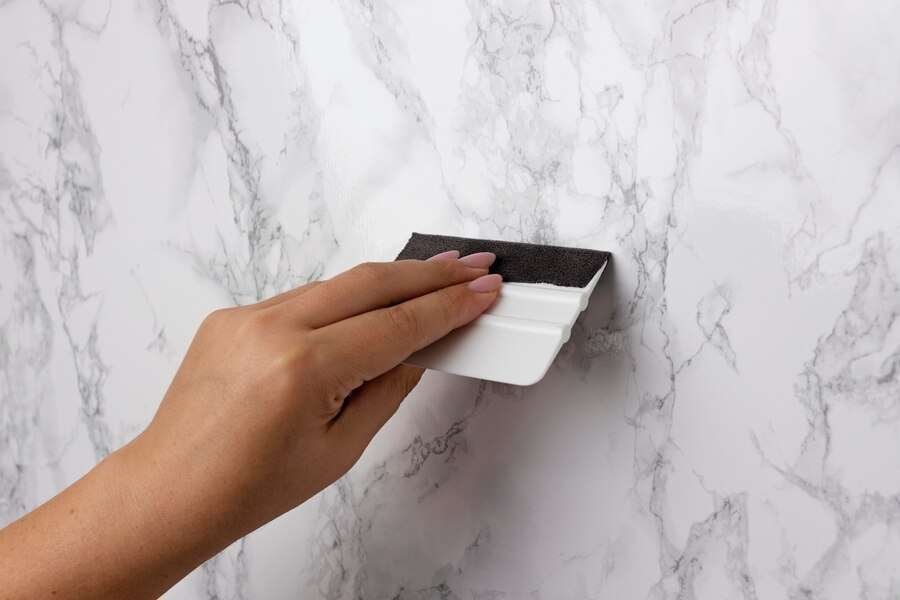
Durability
While peel and stick tiles are durable, they may not be as long-lasting as traditional flooring options like ceramic or hardwood. They can be susceptible to wear and tear, especially in high-traffic areas.
Subfloor Preparation
The surface you apply the tiles to must be smooth, clean, and dry. Uneven or textured surfaces can cause the tiles to lift or not adhere properly. In some cases, additional subfloor preparation may be required.
Removal
Peel and stick tiles can be removed, but they might leave behind adhesive residue, especially if they’ve been in place for a long time. Removing them without damaging the underlying surface can be a bit challenging.
How Do You Maintain Peel and Stick Floor Tiles?
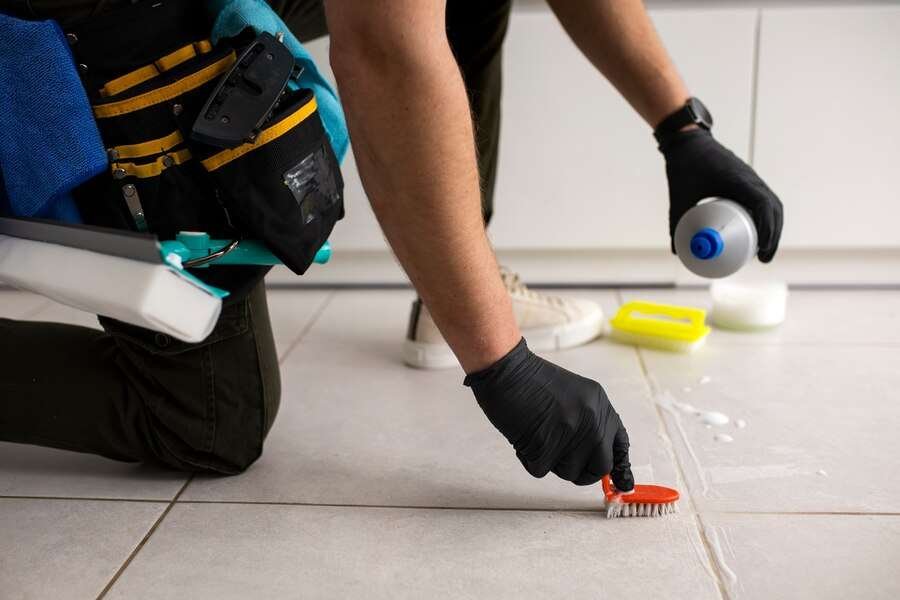
Regular Cleaning
To keep your peel and stick tiles in good condition, clean them regularly with a mild detergent and water. Avoid harsh chemicals that can damage the adhesive or the surface of the tiles.
Handling Stains
For tough stains, use a non-abrasive cleaner. Gently scrub the stained area with a soft cloth or sponge. Always test any cleaner on a small, inconspicuous area before applying it to the entire surface.
Inspecting and Repairing
Periodically check for any loose or damaged tiles. If you find any, replace them promptly to prevent further issues. Some tiles may be removed and re-applied, while others might need complete replacement.
Can Peel and Stick Floor Tiles Be Used Over Existing Flooring?
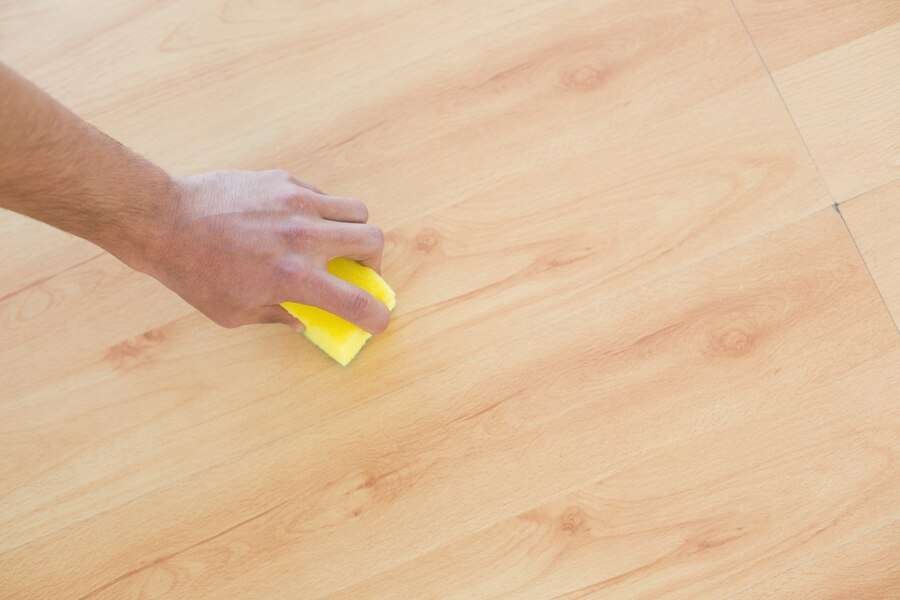
Compatibility
Yes, peel and stick tiles can often be installed over existing flooring, provided the surface is clean, dry, and smooth. This can save time and effort compared to removing old flooring.
Types of Existing Flooring
You can install peel and stick tiles over most types of flooring, including:
- Vinyl: They adhere well and can be used to update the look of old vinyl floors.
- Tile: Ensure the tiles are clean and well-bonded. Some textured tiles may require additional preparation.
- Wood: Make sure the wood is in good condition and free from any damage that could affect the adhesive.
How Long Do Peel and Stick Floor Tiles Last?
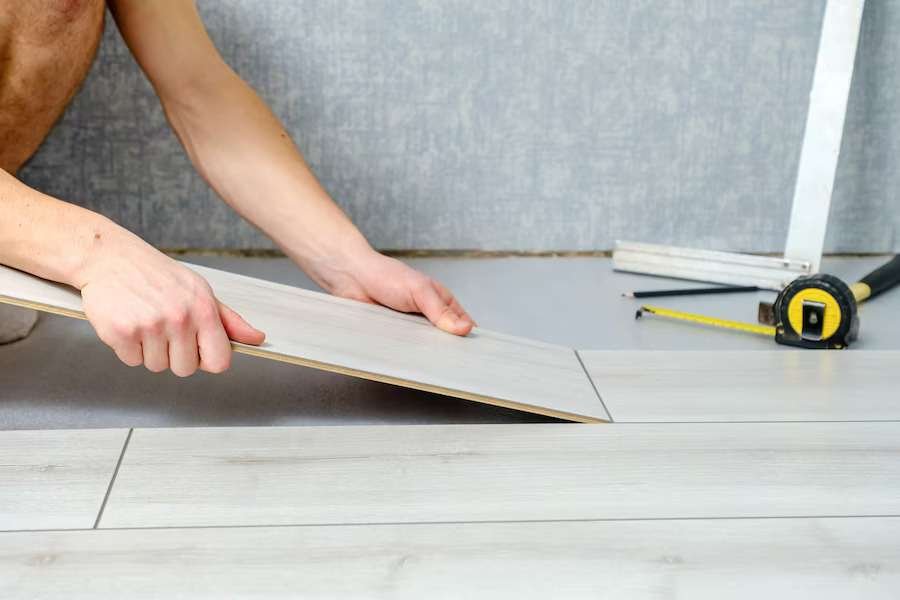
Average Lifespan
The lifespan of peel and stick floor tiles can vary based on factors such as the quality of the tiles, the level of foot traffic, and how well they are maintained. On average, they can last anywhere from 5 to 10 years.
Factors Affecting Longevity
- Traffic: High-traffic areas may experience more wear and tear.
- Maintenance: Regular cleaning and prompt repairs can extend the life of the tiles.
- Installation: Proper installation is crucial for maximising the durability of peel and stick tiles.
In summary, peel and stick floor tiles offer a practical and stylish solution for upgrading your space. Their ease of installation, cost-effectiveness, and variety of designs make them a popular choice for both DIY enthusiasts and homeowners looking for a quick renovation. By understanding their benefits, limitations, and maintenance needs, you can make an informed decision about whether they are the right option for your flooring project.

